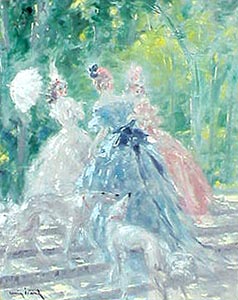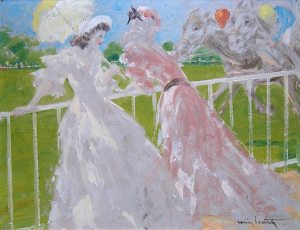
Set-up at the Denver Antiques Show
Upon arriving, Bill remarked to me that one of the dealers in the show said to him “Do you think Phil will get mad at me? I have two lamps that look like Tiffany, but aren’t”. Bill replied “You’re not going to tell them they’re Tiffany, are you?” And he replied “Of course not”. I didn’t quite understand at the time, until I started to walk around the show and came upon a booth filled with over a dozen, obvious (to me), reproduction Tiffany lamps. That’s one of the unpleasant parts of the business that I have to deal with. I went to the show management and complained about the lamps and requested to have them removed. The show manager visited the dealer and didn’t require the dealer to remove the lamps, but did insist that he not sell any of them, but use them for “decoration”. He was told that if he sold any of them that his contract would not be renewed for future shows. Pretty good, but not as good as requiring the lamps to be removed. After all, the show contract requires that dealers not bring reproductions.
Do I know the reason an antiques dealer fills his booth with reproductions? I can only guess at his motives but I don’t think they are benign.
Why do I complain? Two reasons. First and most important is that I eliminate unfair competition for me. If someone believes this dealer that the lamps are original, he will be able to drastically undercut my prices. Second is that I feel an obligation to make shows better for the public. I want showgoers to have good experiences, so they will continue to shop at the shows.
More on Monday on the results of the show. I’ve got no idea what to expect. I asked some of the dealers if this was a good show and got neutral to negative answers. So why do they continue to do this show year after year? Are they gluttons for punishment? Lia, my lovely wife, thinks they just don’t want me here because I’m strong competition for them. Sounds good to me. One of the dealers, who is a straight shooter, told me that the show has been quite good at times. But we’re in a recession at the moment, so we’ll see.
Please visit chasenantiques.com.
If you like my blog, please recommend it to others. Email me with your comments. philchasen@gmail.comI

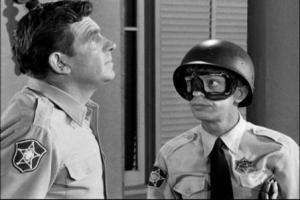
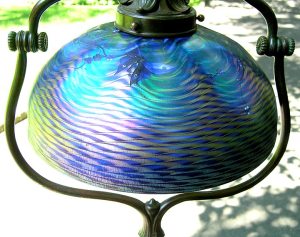
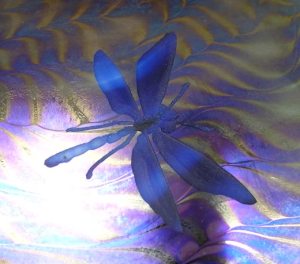



 Another time I was exhibiting at the Miami Beach Antiques Show at the Convention Center. The booth was empty and I was sitting and reading. A couple walked into the booth. When I looked up, I thought I recognized the gentleman, so I asked “Are you the person who I think you are?” He replied “Who do you think I am?” I said “Bruce Springsteen”. He said no, he isn’t and then a few seconds later said yes, he is, and shook my hand. He and his wife, Patti Scialfa, admired some Handel lamps that I had in the booth, but unfortunately for me, did not make any purchase.
Another time I was exhibiting at the Miami Beach Antiques Show at the Convention Center. The booth was empty and I was sitting and reading. A couple walked into the booth. When I looked up, I thought I recognized the gentleman, so I asked “Are you the person who I think you are?” He replied “Who do you think I am?” I said “Bruce Springsteen”. He said no, he isn’t and then a few seconds later said yes, he is, and shook my hand. He and his wife, Patti Scialfa, admired some Handel lamps that I had in the booth, but unfortunately for me, did not make any purchase.